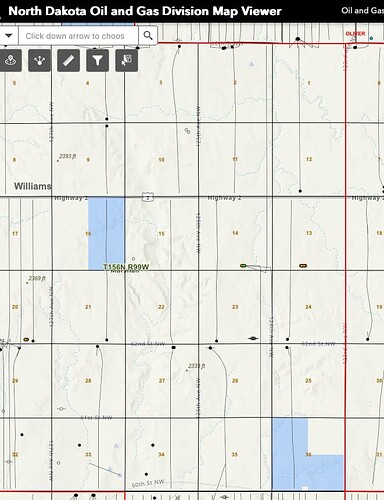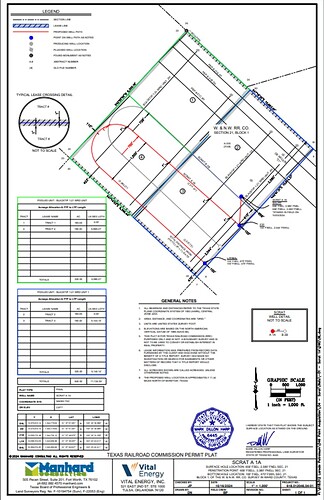So I have a question about Horse-shoe drilling, which is apparently new to the area. We have some things coming in at T156 N Range 99 W Section 14. Some of these are still on confidential status…but you can on the GIS Map Server see where some of them are going. There’s one or two that “horse-shoe” across the section for a ways (14) and then go down into the next section…23. There is some still in 14 but I’m not sure how/if we will get paid for those that “horse-shoe” out of 14 into 23. Anybody have info. I tried to copy that screen but I don’t think it worked.
I think you may be referring to multiunit horizontal wells which are more of an L shape. Vertical down and then a turn to horizontal-not a horseshoe. The surface location is in the southern part of section 14. One well goes north through 14, 11 and into 2. The other wells are the Vandeberg 4-35H, 5-35H, 6-35H and 7-SHSL which go south into 23, 26, and 35. Each section with perforations will pay royalty owners according to their lease terms and the spacing unit. Horseshoe horizontal wells actually have a U in them. Have heard of a few in the Permian basin. You can do an image search online for them.
If you are in 14, then you will get paid on the well going north since the perforations are in 14, 11 and 2. Christopherson wells go north. 7-14H is the new well.
Thank you for the information! Yes, I had never heard of horse-shoeing but a friend in the field erroneously thought that’s what this was. So there are 3 Christopherson wells…so good news. I appreciate the knowledge you share with the group!!!
I have seen the Permian basin in NM/TX having more of the horseshoe wells. You can see the U shape of their well paths. Easier there since there is less faulting and the reservoirs are more level.
Permian example below (red line):
Pretty much a way to drill a 2 mile well (better economics) when you only have one mile (length) of acreage. Over this kind of scale, drill pipe is more or less a piece of wire, it can bend in all sorts of ways. In ND they do a lot better job of making sure nothing is stranded, there aren’t many single sections that have no development, thus not a lot of need.
Thanks for the example! I can definitely see the horse-shoe shape there.
This topic was automatically closed after 90 days. New replies are no longer allowed.


